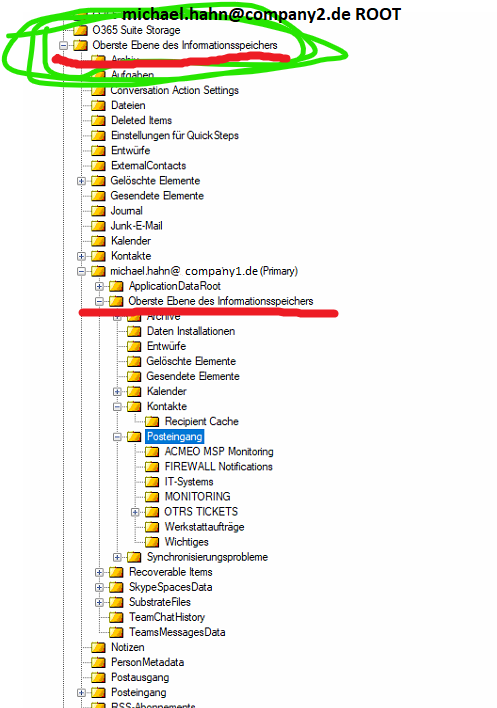read again my last post. IT can perfectly merge with target.
New-MailboxImportRequest -Name "IMPORT0011" -Mailbox "michael.hahn" -SourceRootFolder 'michael.hahn@company1.de (Primary)/Oberste Ebene des Informationsspeichers' -TargetRootFolder '/' -IncludeFolders "/*" -ConflictResolutionOption forcecopy -AzureBlobStorageAccountUri "https://*********.blob.core.windows.net/pstimport/Exchange/michael.hahn.pst" -AzureSharedAccessSignatureToken ""
That command did it with about 100 mailboxes without any issue!
And as you said "The topology isn't same as the mailbox". Yes absolutely! But shouldn't an export that says "one pst file per mailbox" be expected like something you export from the onprem exchange? I would say yes. Because it shows nowhere that it is not the same like onprem. And on the import side, there is no message or anything about "only with onprem exported pst files".
Thats the "expected" behaviour? I would call it an design fault. Because with the O365 Import job + mapping csv, you have no change to import these pst correctly. Because you cant set the "Sourcerootfolder" value.
When the Import-Job gets an pst like this, accept it and offers you the filter options. But imports it completely wrong. Than there should be an check for this topology and correct it or decline it.
Where can I sent my feedback or open issue at the specific dev team? Is there something on github with that topic? Or is this only "internal" dev team?
I just want to tell somebody some ideas who is actively developing on this, because there is some much you could do better with a little efford.
For example, I can import pst files from my own Azure SAS storage. Why not activivate the "onpremlike" exportcommand with own azure SAS storage subscription?
That would be awesome. Because, when you have only exchange online, you just have the search and export function which creates the previously shown pst file.
What is realy sad and bad on the whole thing:
- NOBODY was able to help me in anyway.
- Everything I wrote was never complete read and understood from a) support and b) here in this thread.
Anyway.... My problem was solved by myself with a lot of freetime involved.
Would be great to get an info., where I could reach one of the specific team.





